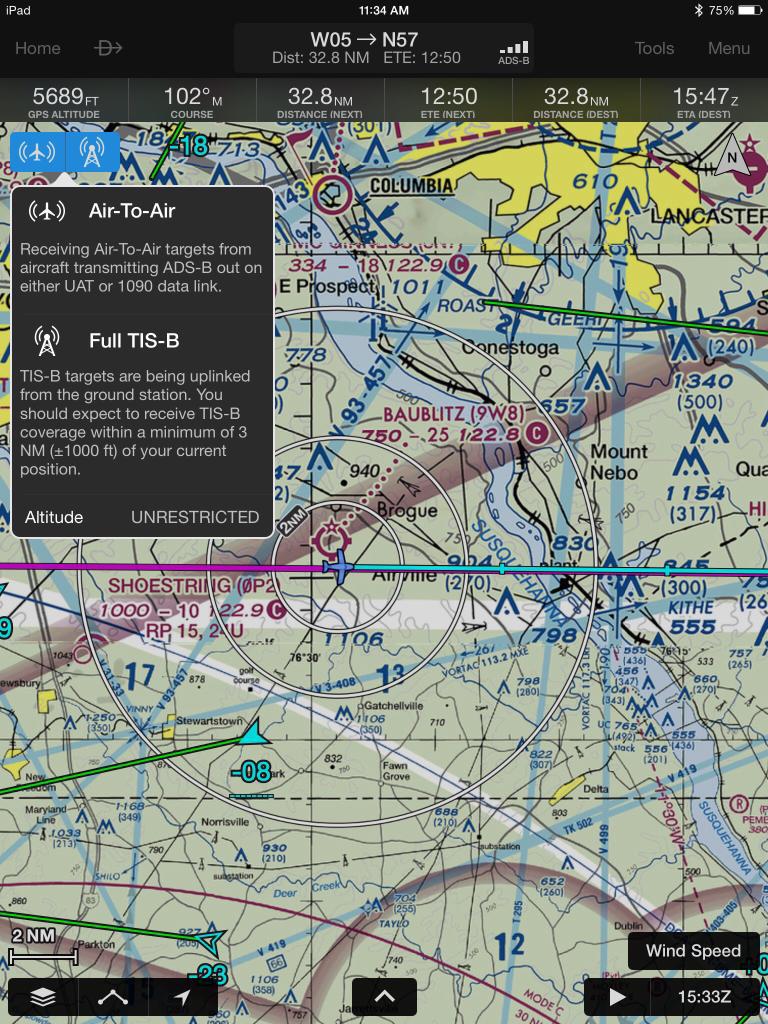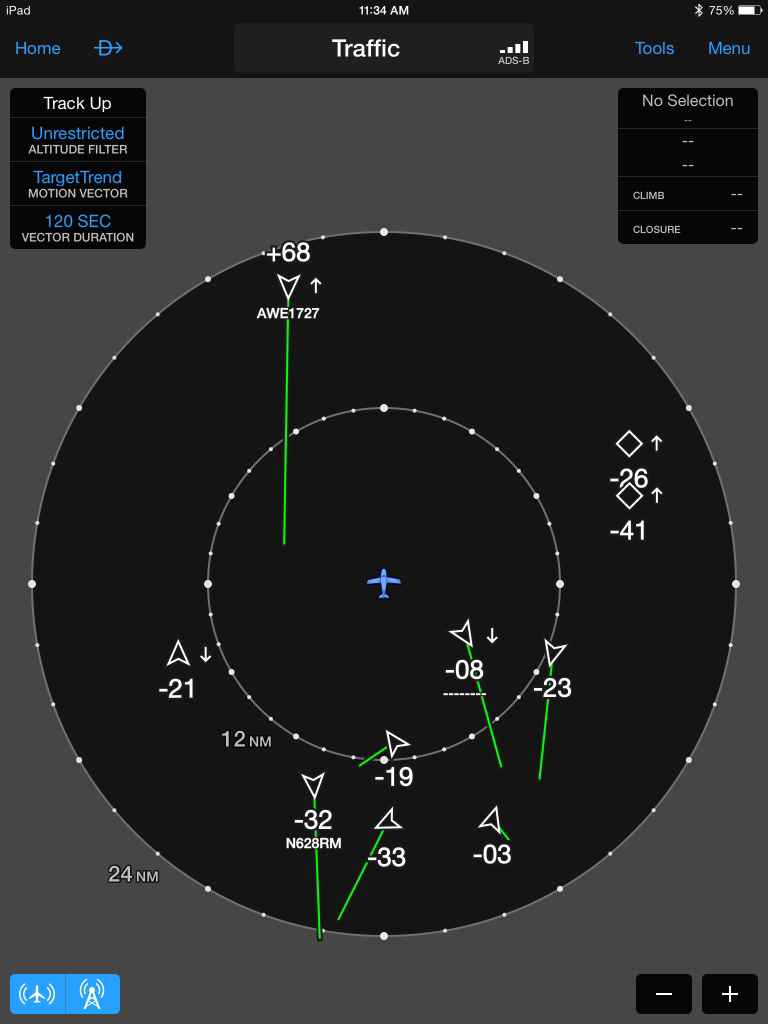I really want to buy an ADS-B receiver. I've flown with both the Garmin GDL-39 and the Stratus II. Both have worked great. I'll definitely go with the version with AHRS. The problem is you're making a big-time commitment to the particular app since the two mentioned only support one app each.
I still think ForeFlight has the edge in user-friendliness, but Garmin has been driving hard and is close. The main thing ForeFlight lacks at this point is synthetic vision (SV), which I view as an invaluable backup and the reason to go with an AHRS unit.
Garmin's major shortcoming for me is the lack of IAP overlays. I find them very valuable for situational awareness when approaching my destination. Their interface is also more cumbersome than ForeFlight. But their SV is the best of the bunch. The upside there is it would support my Nexus 7 backup EFB, which is why I subscribe to it as well as ForeFlight.
A dark horse is FlyQ EFB. I actually prefer their UI to Garmin's and it's a close tie to ForeFlight. The plus for them is they are agnostic on ADS-B hardware support. They also have IAP overlays and their SV is only slightly behind Garmin. The downside is the hardware options are more expensive than the other two.
If FireFlight added SV, or Garmin added IAP overlay support, I'd have a much easier decision one way or the other. At around a grand, it's not something you want to buy again in six months.
Anyone else struggling with this decision?
I still think ForeFlight has the edge in user-friendliness, but Garmin has been driving hard and is close. The main thing ForeFlight lacks at this point is synthetic vision (SV), which I view as an invaluable backup and the reason to go with an AHRS unit.
Garmin's major shortcoming for me is the lack of IAP overlays. I find them very valuable for situational awareness when approaching my destination. Their interface is also more cumbersome than ForeFlight. But their SV is the best of the bunch. The upside there is it would support my Nexus 7 backup EFB, which is why I subscribe to it as well as ForeFlight.
A dark horse is FlyQ EFB. I actually prefer their UI to Garmin's and it's a close tie to ForeFlight. The plus for them is they are agnostic on ADS-B hardware support. They also have IAP overlays and their SV is only slightly behind Garmin. The downside is the hardware options are more expensive than the other two.
If FireFlight added SV, or Garmin added IAP overlay support, I'd have a much easier decision one way or the other. At around a grand, it's not something you want to buy again in six months.
Anyone else struggling with this decision?


